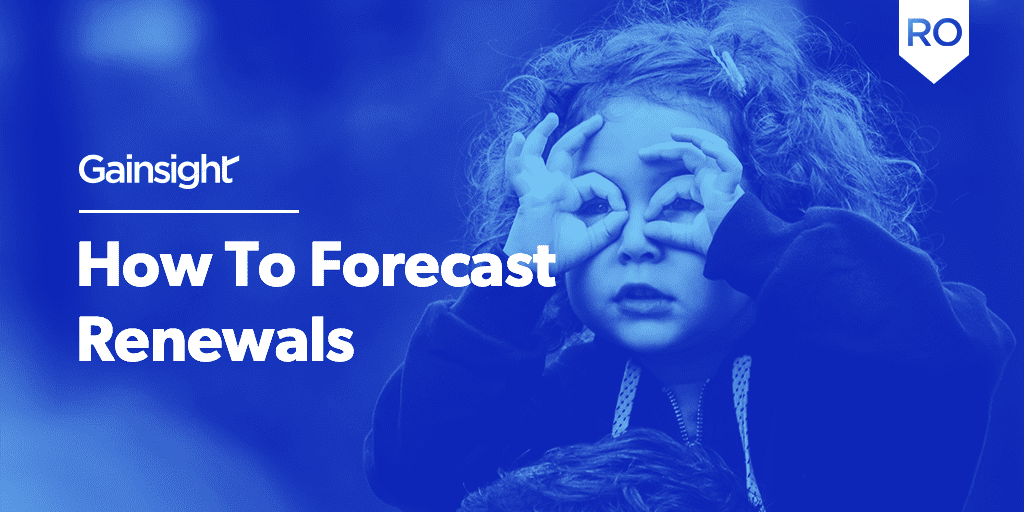Signing new customers costs five times as much as retaining old ones. So why are businesses failing at renewals?
One of the most common problems I see in forecasting renewals is that businesses simply don’t know how to leverage their data in the right ways. They treat it the same as they treat sales and are stumped when their forecasts show up as less than accurate.
That’s because forecasting renewals is a whole different game than forecasting regular net-new sales. You can’t just use your existing sales forecasting tool because forecasting renewals require you to leverage a completely different set of data.
Remember in the movie Space Jam, when Bugs Bunny gave his teammate’s the water bottle with “Michael’s Secret Stuff”? After they drank it, they went from losing horribly to whooping some major monster behind.

Think of a renewal system as your very own “Secret Stuff”. Chances are, like Bugs’ team, you don’t really understand it or how it does what it does—but unlike Bugs and Michael Jordan, our Secret Stuff is actually real.
Ready to score some three-pointers? Check out how you can forecast renewals like a pro.
Leverage Machine Learning
One of the greatest perks of the machine takeover is that you don’t have to waste time pouring over spreadsheets and analyzing complicated data. Renewal management software frees up your time by providing this information for you.
Machine learning allows you to input data from previous customers to essentially “train” a model to recognize the signs and likelihood of a customer becoming inactive or jumping ship altogether. By using machine learning, you can assess customer data and automatically generate a renewal likelihood score for each client, making it easy to identify at-risk customers.
From here, your Renewals team can tap into that information and take over to add just the right amount of human touch to your customer’s interactions. Keep in mind that although machine learning is a valuable tool, it shouldn’t completely replace human interaction.
Identify Important Metrics
When it comes to forecasting renewals, there are three main metrics businesses should keep their eyes on:
- Churn Rate: Also known as the Attrition Rate, this metric lets you know how many customers are canceling your service every month. By tracking your churn rate, you can find out how long on average customers stay with your service and then use that information to reduce churn.
- Annual/Monthly Recurring Revenue (ARR/MRR): Your ARR/MRR allows you to gauge how your business is performing. By measuring your ARR/MRR rate over a period of time, you can begin to forecast your renewal rate.
- Customer Lifetime Value (CLV): By calculating what each customer is worth to your business, you can figure out the true cost of acquiring a new customer vs. keeping an existing one.
Couple these with other important metrics such as On-Time Renewal Rates, Resolution Rates, and Close Rates, and you’ll have a good idea of what to look out for when forecasting renewals.
Centralize Renewals for Accurate Forecasting
In order to accurately forecast renewals, you need to have an up-to-date view of your business, whether that’s from an executive-level or a microscopic look at the granular details of individual renewals. This bird’s eye view can then be used to reduce churn risk scenarios, making it possible for your renewal team to immediately engage with customers in real-time.
Centralizing your renewal system also increases efficiency. Instead of wasting time generating reports, your team can simply log on and get an immediate view of where a renewal stands.
Your managers and reps can then utilize in-line editing to make changes to renewals in real-time. Using a centralized renewal system, you can create and maintain data cleanliness standards, making it easier for your team to highlight and correct for missed opportunities.
Sound interesting? Demo our renewal management system and see what a centralized system can do for you. 😉
Analyze Your Business for Risk
Nick Mehta said it best: churn is like gravity. If something goes up, you’ve got to fight to keep it from coming down.

Nowadays new options are just a click away, which means you have to work to re-earn your customer’s business every. Single. Day. For renewal teams, this means that proactive measures need to be taken to minimize risk.
Risk manifests in different ways in different businesses but it affects everyone the same. In order to protect your growth and reduce churn, analyzing your business for risk should be at the forefront of your renewal forecast process.
Common factors that can cause at-risk renewals to be recognized too late include:
- Difficulties in updating opportunities at scale
- A limited view of key renewal metrics
- Difficulties in building accurate forecasts
A good renewal system will help analyze these retention metrics as well as other customer attributes to help you visualize forecasts by booking type as well as contributors to churn. This will in turn give you a clear and thorough display of all renewals as well as a deeper understanding of what causes them.
In addition, having a renewal system can help visualize the impact of how the shifting likelihood of individual renewals impacts overall retention. From there you can preemptively address these factors to mitigate at-risk situations entirely.
Forecasting Renewals Comes Down to Data
Companies with top-performing retention rates understand that it all comes down to data and how it’s processed. These companies have sophisticated early warning systems, real-time understanding of their business, and the ability to perform these functions at scale.
It’s not enough to have an ace team anymore. Even the best renewal teams can fall victim to high churn rates without the appropriate technology. It’s simply too large of a job for humans to do at scale and takes away from what your renewal team should actually be doing—driving desirable customer outcomes.
The solution: a complete renewal management system. Utilizing machine learning can save your renewal team significant time and effort recognizing at-risk renewals. In the era of Saas, that’s something businesses can’t afford to fall behind on.
